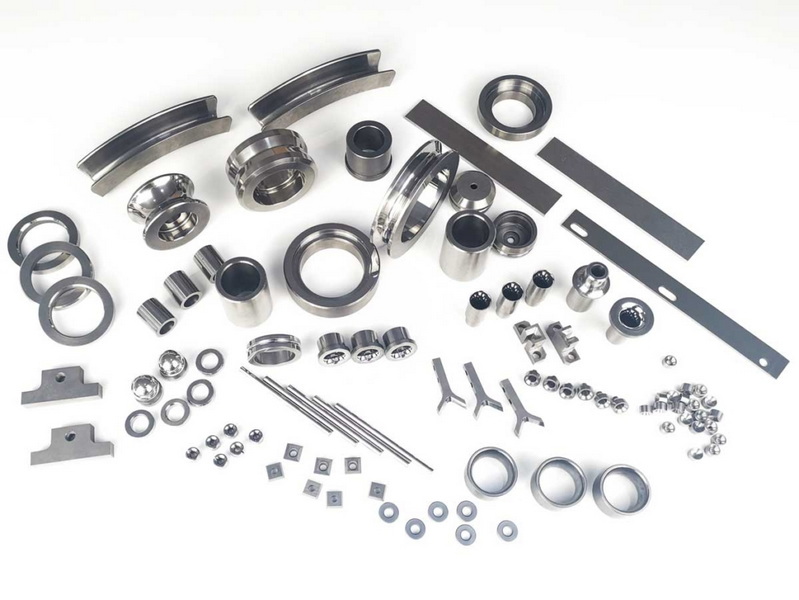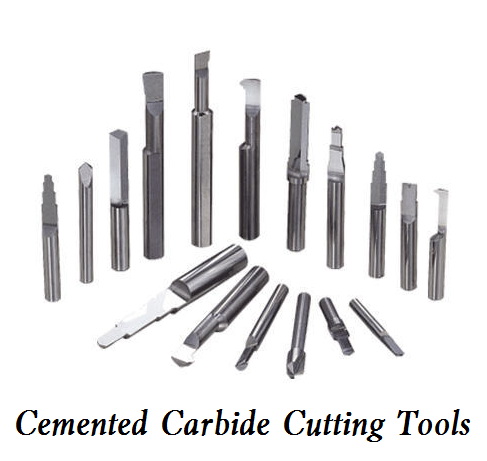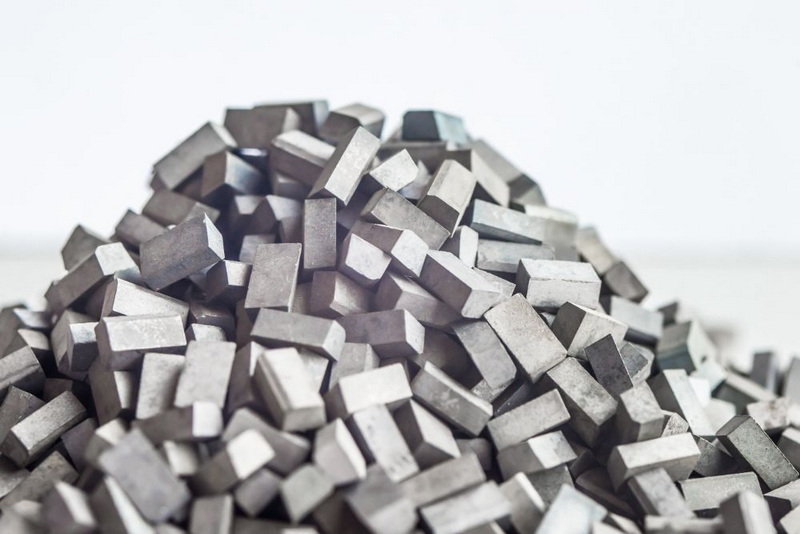Content Menu
● Introduction to Tungsten Carbide
>> Chemical and Physical Properties
● Detection Methods for Tungsten Carbide
>> Non-Destructive Testing (NDT)
>> Destructive Testing
>> Chemical Analysis with ICP-AES
● Applications of Tungsten Carbide
● Advanced Applications and Future Developments
>> Nanotechnology and Composite Materials
>> Energy Applications
>> Environmental Considerations
● Challenges and Limitations
>> Overcoming Challenges
>> Sustainability Efforts
● Conclusion
● FAQ
>> 1. What are the primary methods for detecting tungsten carbide?
>> 2. How does ICP-AES work in detecting tungsten carbide?
>> 3. What are the key properties of tungsten carbide?
>> 4. What are common applications of tungsten carbide?
>> 5. How does cobalt affect the properties of tungsten carbide?
● Citations:
Tungsten carbide, with its exceptional hardness and wear resistance, is a crucial material in various industrial applications, including cutting tools, wear parts, and jewelry. Detecting tungsten carbide involves understanding its properties and using appropriate testing methods. This article will delve into the properties of tungsten carbide, common detection methods, and provide insights into its applications.

Introduction to Tungsten Carbide
Tungsten carbide (WC) is a compound made of tungsten and carbon atoms, known for its high melting point, hardness, and resistance to wear and corrosion. It is often used in cemented carbide, where it is mixed with a metallic binder like cobalt to enhance toughness and strength.
Chemical and Physical Properties
- Chemical Composition: Tungsten carbide is primarily composed of tungsten and carbon, with two well-characterized compounds: WC and W2C.
- Physical Properties: It has a high melting point of 2,870°C, a Young's modulus of approximately 550 GPa, and is extremely hard, ranking about 9 on the Mohs scale.
A[High Melting Point] --> B[Hardness]
B --> C[Wear Resistance]
C --> D[High Young's Modulus]
D --> E[Thermal Conductivity]
E --> F[Chemical Stability]
Detection Methods for Tungsten Carbide
Detecting tungsten carbide involves both destructive and non-destructive testing methods.
Non-Destructive Testing (NDT)
1. Ultrasonic Testing (UT): Uses high-frequency sound waves to detect internal defects.
2. Magnetic Particle Testing (MT): Detects surface and near-surface defects in ferromagnetic materials, useful for components with metallic binders.
3. Dye Penetrant Testing (PT): Identifies surface cracks by applying a dye that seeps into defects.
4. Eddy Current Testing (ECT): Detects surface or near-surface irregularities in conductive materials.
5. Visual Inspection (VT): A basic method for identifying visible surface defects.
A[Ultrasonic Testing] --> B[Magnetic Particle Testing]
B --> C[Dye Penetrant Testing]
C --> D[Eddy Current Testing]
D --> E[Visual Inspection]
Destructive Testing
1. Hardness Testing: Uses methods like Vickers hardness to measure the material's hardness.
2. Chemical Analysis: Techniques such as Inductively Coupled Plasma Atomic Emission Spectroscopy (ICP-AES) can analyze the chemical composition of tungsten carbide samples after digestion.
A[Sample Preparation] --> B[Vickers Hardness Test]
B --> C[Result Analysis]
Chemical Analysis with ICP-AES
ICP-AES is a powerful tool for analyzing the elemental composition of materials. For tungsten carbide, samples are typically digested using nitric acid before analysis.
A[Sample Digestion] --> B[ICP-AES Analysis]
B --> C[Elemental Composition]
Applications of Tungsten Carbide
Tungsten carbide is widely used in:
- Cutting Tools: Due to its hardness and wear resistance.
- Wear Parts: For applications requiring high durability.
- Jewelry: Known for its scratch resistance and durability.
Applications of Tungsten Carbide
A[Cutting Tools] --> B[Wear Parts]
B --> C[Jewelry]

Advanced Applications and Future Developments
Nanotechnology and Composite Materials
Recent advancements in nanotechnology have led to the development of nanostructured tungsten carbide, which offers improved mechanical properties and potential applications in advanced composites. These composites can be used in aerospace and biomedical industries, where high strength-to-weight ratios are crucial.
Energy Applications
Tungsten carbide is also being explored for its potential in energy storage and conversion technologies, such as fuel cells and supercapacitors. Its high surface area and conductivity make it an attractive material for enhancing the performance of these devices.
Environmental Considerations
As industries move towards more sustainable practices, the recycling and reuse of tungsten carbide become increasingly important. Techniques for recycling tungsten carbide from scrap materials are being developed to reduce waste and conserve resources.
Challenges and Limitations
Despite its advantages, tungsten carbide faces challenges related to its production cost, environmental impact, and the difficulty of machining it due to its hardness. Researchers are working on developing more efficient manufacturing processes and exploring alternative materials that can mimic its properties at a lower cost.
Overcoming Challenges
To address these challenges, innovations in manufacturing techniques, such as additive manufacturing (3D printing), are being explored. These methods can reduce material waste and improve the precision of tungsten carbide components.
Sustainability Efforts
Efforts to improve sustainability include the development of closed-loop recycling systems for tungsten carbide. This involves collecting and processing used tungsten carbide to produce new materials, reducing the need for primary tungsten extraction.
Conclusion
Detecting tungsten carbide involves understanding its unique properties and applying appropriate testing methods. Whether through non-destructive techniques like ultrasonic testing or destructive methods such as chemical analysis, each approach provides valuable insights into the material's quality and composition. As technology advances, tungsten carbide continues to play a vital role in various industries, with ongoing research aimed at expanding its applications and improving its sustainability.

FAQ
1. What are the primary methods for detecting tungsten carbide?
The primary methods include non-destructive testing techniques like ultrasonic testing, magnetic particle testing, and dye penetrant testing, as well as destructive methods such as hardness testing and chemical analysis using ICP-AES.
2. How does ICP-AES work in detecting tungsten carbide?
ICP-AES involves digesting tungsten carbide samples in nitric acid and then analyzing the resulting solution to determine the elemental composition of the material.
3. What are the key properties of tungsten carbide?
Tungsten carbide is known for its high melting point, extreme hardness, and excellent wear resistance, making it ideal for applications requiring durability and strength.
4. What are common applications of tungsten carbide?
Common applications include cutting tools, wear parts, and jewelry due to its hardness and resistance to wear and corrosion.
5. How does cobalt affect the properties of tungsten carbide?
Cobalt acts as a binder in cemented carbide, enhancing toughness and strength while maintaining hardness. Higher cobalt content improves impact resistance but may reduce hardness.
Citations:
[1] https://patents.google.com/patent/CN102230861B/en
[2] https://en.wikipedia.org/wiki/Tungsten_carbide
[3] https://www.retopz.com/non-destructive-testing-ndt-in-the-tungsten-carbide-industry-an-explanatory-overview/
[4] http://www.tungsten-carbide.com.cn
[5] https://www.linkedin.com/pulse/nine-types-measuring-equipment-needed-detect-tungsten-linda-tian
[6] http://www.chinatungsten.com/Tungsten-Carbide/Properties-of-Tungsten-Carbide.html
[7] https://www.carbide-part.com/blog/comprehensive-guide-to-testing-tungsten-carbide-rods-key-steps-to-ensure-quality-and-performance/
[8] https://stock.adobe.com/search?k=tungsten+carbide
















